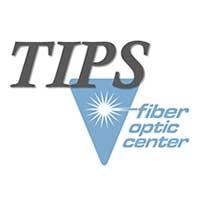
Key Error, Angle, and Apex are all related. If you know any two of these geometric characteristics, you can mathematically calculate the third.
For this reason, the Key Error causes above also can relate to Angle and Apex values.
Additional potential causes of Angle and Apex failure include:
- APC ferrule comes in one of two ferrule-tip shapes: “Step” or “Conical”. With Step ferrules, the angle is easier to control, as the ferrule tip (where the angle is being cut into) is a cylindrical shape—–which means regardless of how much you polish / how much material is removed, the “footprint” of the polished surface remains constant. With Conical ferrules, because the ferrule tip is a conical shape, the footprint gets larger and larger the more we polish/remove material. The alters the angle and radius as we polish more and more, and makes angle control/process development more difficult than step ferrules.
- Step ferrules should be polished using an 8.0 degree APC polishing fixture.
- As long as you are SURE you cut ALL THE WAY across the surface of a Step Ferrule when creating the angle, then the measured angle values should remain constant, regardless of how much you polish. The measured angle values can then only be adjusted by making changes to Radius (increasing or decreasing polishing pressure, or using a different durometer rubber pad). Increasing radius will increase measured angle value, and vice-versa.
- In terms of angle value control, Step ferrules are easier and preferred—-however, they are usually more expensive to purchase.
- Conical ferrules should be polished using an 8.2-degree polishing fixture (this additional angle compensates for a smaller footprint on the tip of the Conical ferrules resulting in smaller measured angles).
- The more you polish a conical ferrule, the more the measured angle and radius values will change. Be sure to cut the angle ALL the way across the flat surface.
- If your polishing process results in angle values that are not acceptable, and you don’t know if you should increase or decrease your polishing times—simply re-polish a fixture’s-worth of the ferrule and observe the angle change. For example: if you are seeing consistently small angles, repolish and measure: if the angle values increase, then you know you need to add more time/steps to your process. If angle values decrease, you have polished too much and need to back off on time/steps.
- Step ferrules should be polished using an 8.0 degree APC polishing fixture.
- The fixture hole IDs are worn or oversized. This is common in plates that are 3 to 5 years old (and older). You can check this with pin gauges or send the plate back to the manufacturer to check tolerances.
- The rubber pad durometer is not constant due to wear. Again, be sure to replace rubber pads every 6 months (1 year at most).
READ THE FULL BLOG ARTICLE HERE: Steps to Overcome Common APC Polishing Issues
Additional resources from the FOC team include:
- Category Resource:
- View the Glossary, Acronyms, Military Specifications for Connectors
- Q&A Resource: email technical questions to AskFOC@focenter.com
Have questions about this FOC Tip?
Contact FOC with questions at: (800) 473-4237 / 508-992-6464 or email: FiberOpticCenter@focenter.com and we will respond ASAP.


